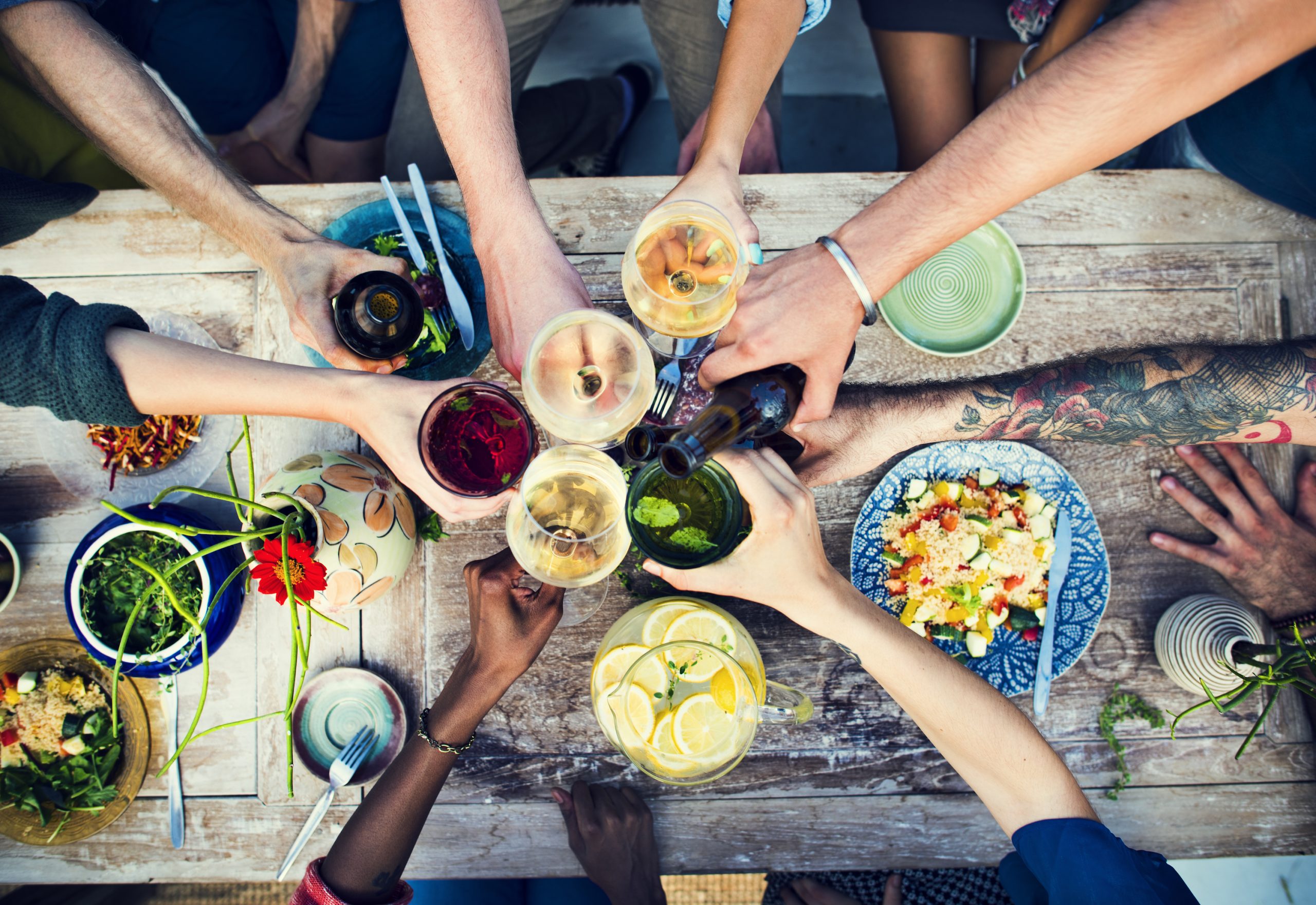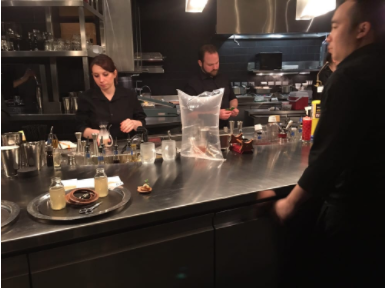


In my first bartending gig, we didn’t interact with the kitchen. The food menu was created by one person, the drink menu created by another. Food and drinks never paired together. All restaurants and bars have their own personal style, but the ones that deliver the best experience create complementing food and beverage menus. Here are a few examples where bar managers are utilizing their resident chefs in the kitchen to create incredible cocktail menus.
For bars looking to dive further into the culinary world, look no further than Chicago’s The Aviary. The Aviary is a bar started by chefs and it shows—bartenders work at stations set up like those you’d find in a kitchen.

Bartender (or “bar chef”) Nigal Vann embraces the similarities between The Aviary’s bar and a traditional kitchen.
“We get to play with a lot of tools, making tinctures, using sous-vide…what we do goes beyond the glass. I don’t want to say our founders started it, but they are known for it.”
These back-of-house techniques educate and elevate bartenders’ skill set well beyond a traditional bar training, and allows them to explore new creative avenues for cocktail creation.
Cocktail programs like the Aviary’s are a first in back-of-house exposure. But, even in less cocktail-savvy bars and restaurants, you’ll likely find fresh juice and syrups. Of course, fresh product can be costly for businesses whose budget is limited. This cost is only compounded for those that don’t make sustainable use out of that product.
Natasha Mesa, head bartendress of Raven and Rose in Portland, OR, stresses the benefits of using product sustainability to avoid waste.
“When the kitchen and bar work together, you find more use for a single ingredient. For example, the kitchen may use the grapefruit supremes, and the bar would use the peels for citrus cordial or oleo.”
If your kitchen and bar aren’t communicating about ingredients and you’re losing money to waste, encourage them to find more creative ways to use the same product.
For Erin Jones of Coquine in Portland, the kitchen is always part of how she operates her bar.
“My experience behind the bar is driven by my back-of-house experience. I try to build flavors in a glass the way a chef would build flavors on a plate. Look at what is in season, what flavors work together and how can I make that interesting.”
Erin frequently updates her Instagram with pictures of what she’s harvested from her garden and brought to life at Coquine. For bar managers who are less back-of-house savvy, it’s always a good idea to pick at your chef’s brain. Erin still does this regularly.
“I work with Katy (Coquine’s chef) on lots of drinks. When I get stuck or need an inspiration boost, I go to her about how to make ideas happen: how to work out a particular items, for a garnish idea, or how to source something, what’s in season, etc. She and the pastry chef, Lauren, are great resources for me.”
Even if you aren’t located in a city like Portland or Chicago, it is possible to get your kitchen and bar working together. Establishments everywhere are giving way to this new approach to operating. Why? It’s cost-effective, boosts employees’ creative juices, and expands the abilities of your entire staff.
Erin put it well, “It’s a symbiotic relationship. You need to have that back and forth to be successful on both sides of the line. This creates a more cohesive guest experience.”
How are you bringing your kitchen and bar together to change the guest and employee experience?
